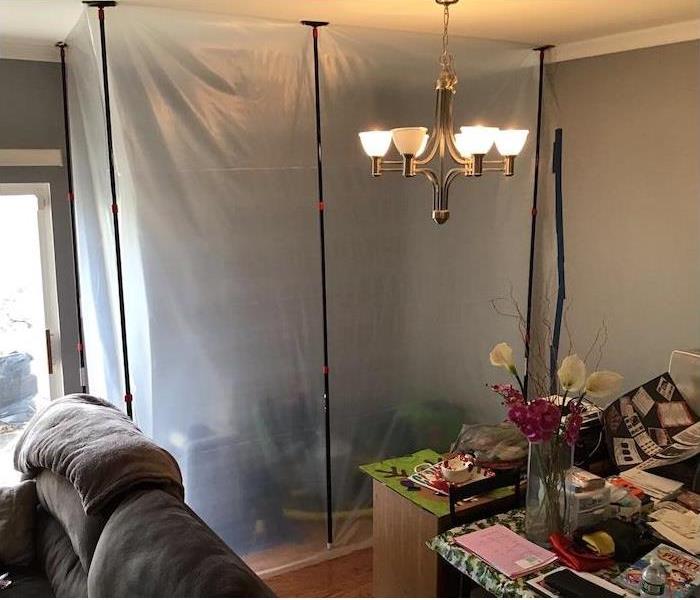Safe and Long-Term Intervention for Dover Homes with Mold Damage
9/14/2022 (Permalink)
SERVPRO Experience Overcomes Dover Mold Contamination
It is no secret that mold infestation creates risks once it develops in a property. Deterioration of structural materials and release of particulate matter are the main issues people fear. Some mold damage hazards might develop when you try to mitigate the problem, so it is better to involve a professional when the issue affects your Dover home.
Some of the safety issues that develop when your Dover home has mold damage emanate from your choices. Choice of restoration method, equipment, or chemicals can lead to adverse outcomes, including damages from residues or fires when chemical control products ignite. SERVPRO helps prevent negative consequences by choosing safe yet effective solutions.
Safe mitigation of mold damage starts with a clear understanding of the problem. The contamination is caused by different species of fungi that colonize organic materials, which they break down and consume as nutrients. The process starts when moisture activates microscopic spores lying on a surface. The problem only becomes apparent when a large colony forms and exhibits signs like discoloration and dark patches. Removing the colonies takes physical agitation, applying biocides and deodorization to manage the musty odors.
Ways to Contain Mold Development
- Eliminating moisture sources
- Killings spores
- Removing unsalvageable materials
- Refinishing and restoration
The moisture that activates mold spores can be from a temporary source such as flooding or a long-term one such as pipe leaks. If the source still adds moisture to a building, the problem keeps growing and spreading beyond the initially affected areas. Eliminating such sources is vital. Our SERVPRO technicians can help perform various actions against moisture, including regular or specialized water extraction or drying.
Problems After Intervention Against Mold
Issues can arise from the very actions you take to manage an infestation. For example, drying needs to be closely monitored and managed to avoid spreading contamination. Drying involves using air movers. The air currents produced can spread spores and moldy residue across the house. Of significant concern is the possibility of contaminating the HVAC system with such residues, resulting in long-term indoor air quality issues. Spreading residues can also contaminate new areas.
Drying also removes moisture from wet materials, releasing it into the air as humidity. Unfortunately, this is not a final solution since condensation can release moisture into the materials you intend to dry. SERVPRO professionals ensure sufficient dehumidification resources to extract humidity from the air.
Other useful precautions:
- Using a dry deodorization technic
- Turning off flames, flash, and ignition sources when fogging
- Using essential PPE such as respirators or bodysuits
Curtailing moisture supply resolves a mold problem only halfway. A complete solution needs to clean soiled areas eliminating signs of the contamination "Like it never even happened." Cleaning moldy soils is challenging compared to ordinary materials because you must collect all the fine residues from surfaces and crevices. Using wet cleaning methods is not ideal since it can spread the contamination further. Our SERVPRO technicians HEPA vacuum surfaces first before using other cleaning methods. We then damp-wipe the affected areas with antimicrobial detergents. The best cleaning products contain sporicides that effectively control fungal and bacterial spores.
SERVPRO of Dover / Stillwater can help ensure your home is safe from immediate recurrence after mold damage by addressing the root causes of an infestation. You can reach us at (973) 810-2825.






 24/7 Emergency Service
24/7 Emergency Service
